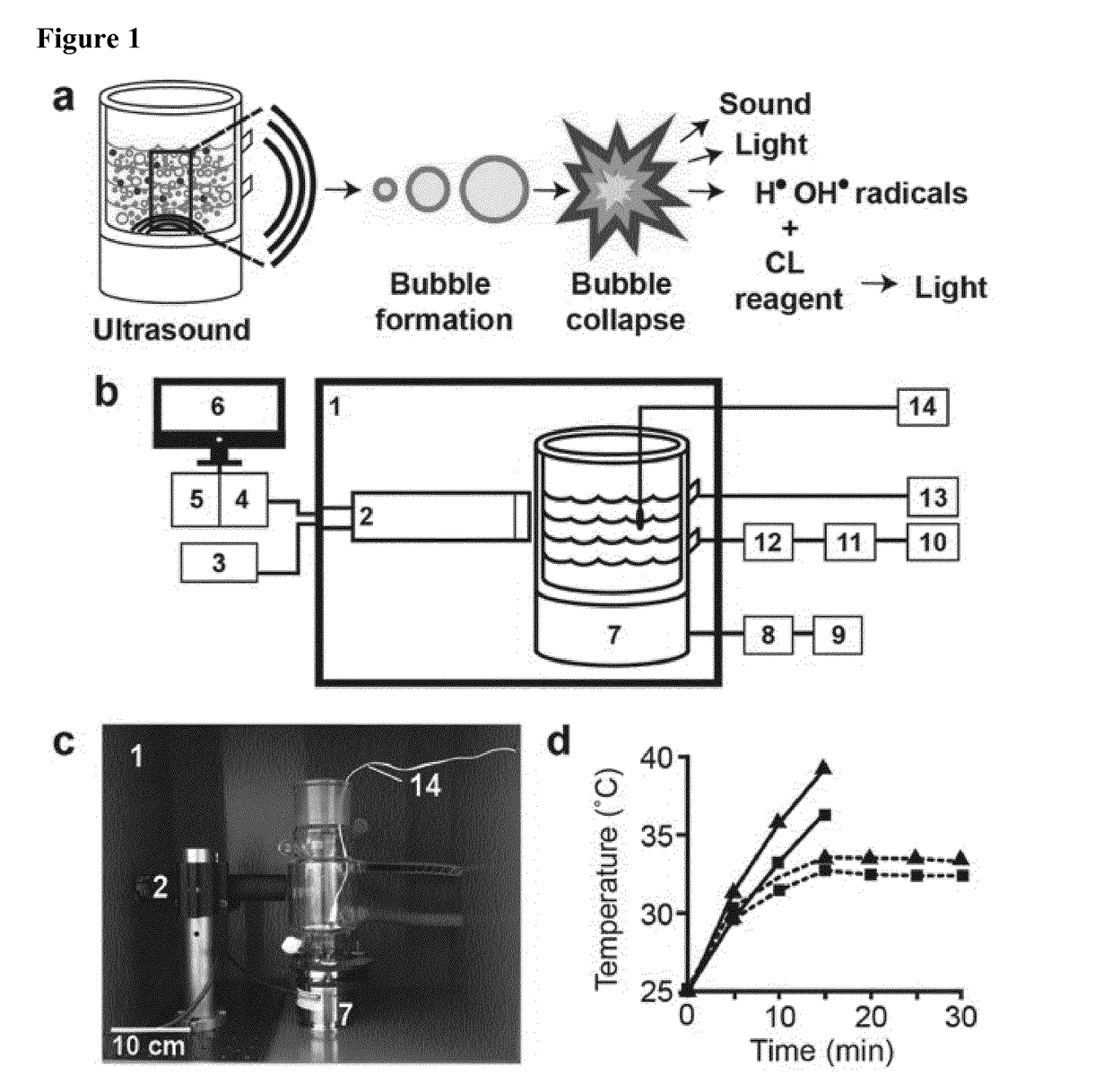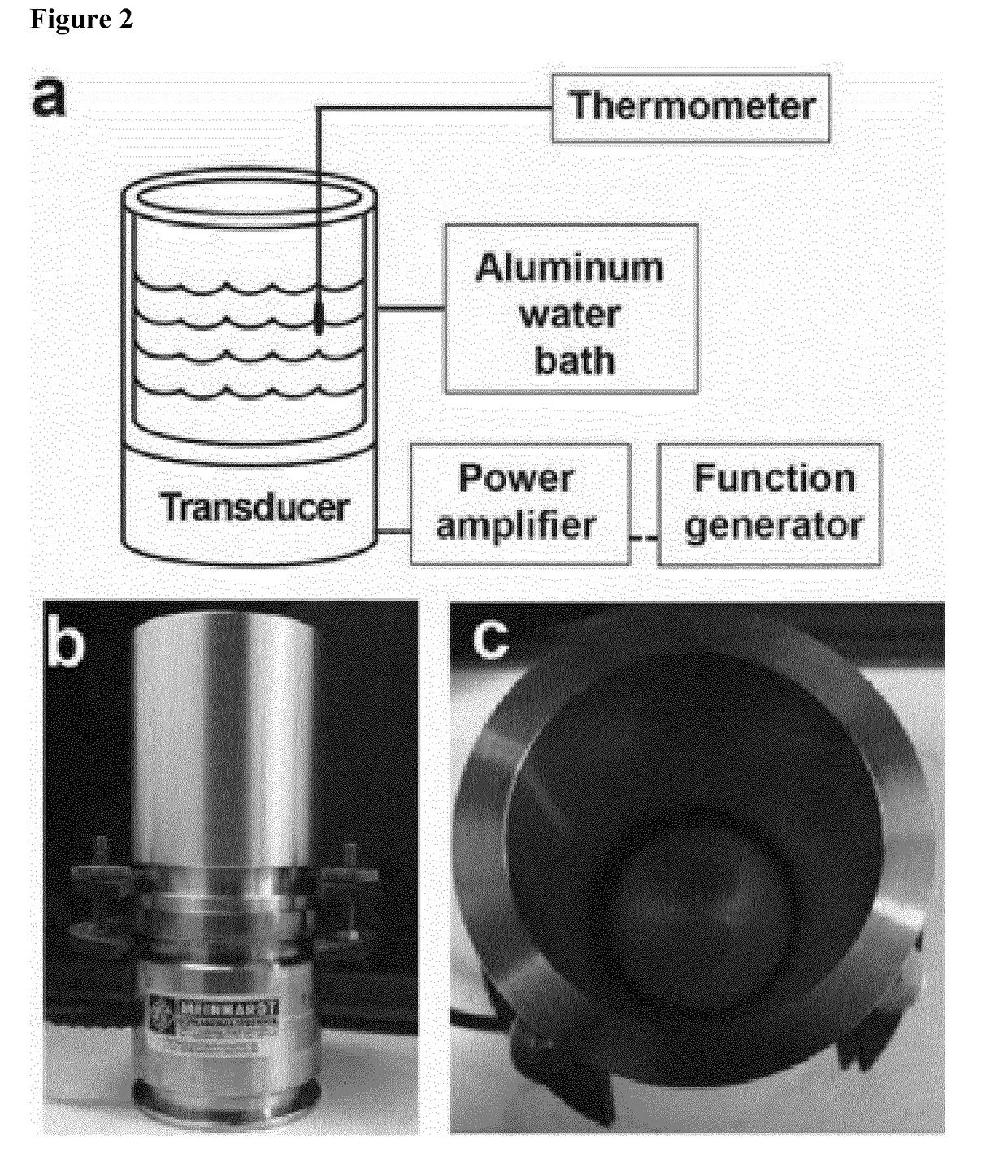Ultrasound method
a technology of ultrasonic sound and sound waves, applied in the field of ultrasonic sound waves, can solve the problems of gap in technology that prevents the development of biomedical and sensor systems
- Summary
- Abstract
- Description
- Claims
- Application Information
AI Technical Summary
Benefits of technology
Problems solved by technology
Method used
Image
Examples
example 1
Summary
[0254]Sound waves serve as information carriers in animal communication, medical diagnostics and object detection. In many natural and engineered systems, sound is converted into short-lived electrical signals by mechanical sensors, such as specialized nerve cells or magnets and coils. Methods to register sound, preferably ultrasound (US), into longer lasting and biologically universal signals, preferably on nano- or micrometer scales, are currently not available but would allow for fundamentally new applications in acoustics and biotechnology. Here, we apply US to specifically activate gene transcription in living cells. We first quantified light emission in sonoluminescence (SL) as well as in luminol- and Cypridina luciferin methoxy analogue (MCLA)-catalyzed sonochemiluminescence (SCL) in a reactor suitable for live-cell experiments.
[0255]In balanced reaction conditions for cavitation and cell survival, we obtained light intensities ranging from ˜0.25 to 12 nW / cm2. When com...
example 2
[0275]This Examples applies US to control the signaling / morphology of mammalian cells in artificial tissues.
[0276]We used a cell line originally derived from a malignant pleural mesothelioma (M38K) that is naturally responsive to growth factors [42]. We extended this cell line, now called M38KOpto-mFGFR1, by expressing Opto-mFGFR1, a modified fibroblast growth factor receptor that is exclusively activated by blue light through the light-oxygen-voltage-sensing (LOV) domain of aureochrome 1 from Vaucheria frigida [21, 22]. First, we tested the performance of SCL to activate intracellular signaling in the described mammalian cell line in the two chambers configuration setup (see Methods below). Data analysis shows that luminol SCL induced epithelial-mesenchymal transition (EMT)-like morphological changes in M38KOpto-mFGFR1 cells (FIG. 17a). In a control experiment, we pre-treated the cells with PD166866, a selective FGFR1 kinase inhibitor, and we found that the effect of luminol SCL wa...
PUM
| Property | Measurement | Unit |
|---|---|---|
| frequency | aaaaa | aaaaa |
| pressure | aaaaa | aaaaa |
| temperature | aaaaa | aaaaa |
Abstract
Description
Claims
Application Information
 Login to view more
Login to view more - R&D Engineer
- R&D Manager
- IP Professional
- Industry Leading Data Capabilities
- Powerful AI technology
- Patent DNA Extraction
Browse by: Latest US Patents, China's latest patents, Technical Efficacy Thesaurus, Application Domain, Technology Topic.
© 2024 PatSnap. All rights reserved.Legal|Privacy policy|Modern Slavery Act Transparency Statement|Sitemap



